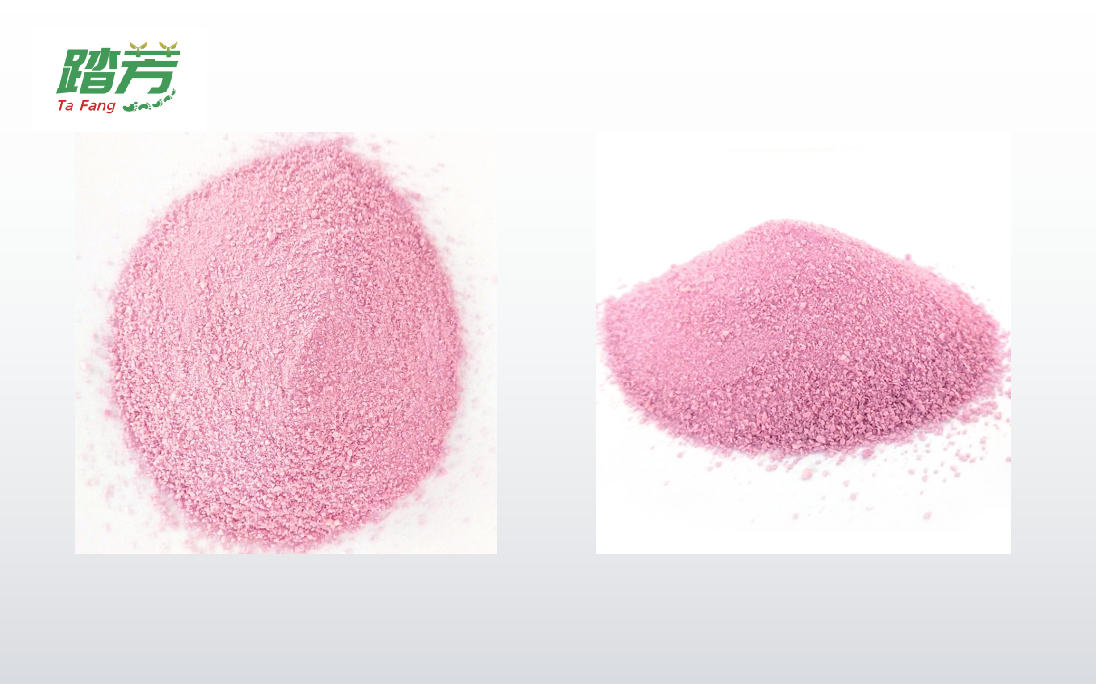Potassium monopersulfate disinfectant was first used in pig farms. Since 1986, the first disinfection product with potassium monopersulfate as the effective ingredient was introduced, it was been continuously developed and optimized. At present, potassium monopersulfate disinfectant has been successfully applied to the prevention and control of more than 500 pathogenic microorganisms (bacteria, fungi and viruses). It can effectively kill foot-and-mouth disease (FMD), African swine fever (ASF), porcine reproductive and respiratory syndrome virus (PRRS), Salmonella and campylobacter.
Natai Chemical, as a manufacturer of potassium monopersulfate compound and a sales company, cooperated with Hebei Suruikang Environmental Protection Technology Co.,Ltd to develop and launch Ta Fang Potassium Monopersulfate Disinfectant Powder, which has been certified by the third-party inspection agency in China and has sufficient stability, safety and efficacy.
Hebei Suruikang Environmental Protection Technology Co.,Ltd has Sanitary permit of disinfection products production enterprise.
Ta Fang Potassium monopersulfate disinfectant powder has ISO9001 certification (Contact our sales representatives to obtain relevant reports).
Natai Chemical is responsible for the sales of this product.
Ta Fang potassium monopersulfate disinfection powder can kill a variety of viruses, bacteria and fungi. It can effectively kill African swine fever (ASF), foot-and-mouth disease (FMD), porcine reproductive and respiratory syndrome (PRRS), Salmonella and campylobacter. It is a powerful, safe, stable, highly adaptable and versatile disinfectant.
The product can be used for environmental and surface disinfection in multiple scenarios:
- Object surface
- Instruments and equipment
- Transport vehicles
- disinfection
- Air disinfection
Broad-spectrum bactericidal capability
In the global poultry and pig industries, Salmonella and Campylobacter are controlled to strict quarantine targets. A diluted concentration of 1:100 or 1:200 can be used to achieve good results against most strains of Salmonella that cause food poisoning.
For specific pathogens: Escherichia coli, Staphylococcus aureus, swine vesicular disease virus, infectious bursal disease virus, 1:400 concentration dilution; Streptococcus, diluted 1:800; Avian influenza virus, 1:1600 concentration dilution; Foot-and-mouth disease virus, diluted at 1:1000.
(For reference only, please consult a sales representative for use)
Sole disinfection
Due to the slow sterilization speed, many types of disinfectants are not suitable for sole disinfection. However, after the use of potassium monopersulfate disinfectant, boots only need to soak for less than a minute after cleaning to achieve effective disinfection. The product still has excellent killing ability in the case of low temperature and organic interference.
Operation safety
Third-party testing has shown that the product is not corrosive to skin and does not cause allergies. The typical 1:100 (1%) dilution ratio (effective ingredient) is non-irritating to the skin and eyes and is not an allergen.
No need to rotate with other disinfectants
Independent studies have shown that the product does not cause pathogen resistance compared to disinfectants with other chemical ingredients, so there is no need to rotate disinfectants.
Low-temperature resistance
The effectiveness of most disinfectants decreases as the temperature decreases. Therefore, concentration and prolonged surface contact time are required to increase. For example, when the temperature is lowered, the bactericidal capacity of formaldehyde is significantly reduced. While potassium monopersulfate disinfectant can maintain the ability to kill a variety of viruses at a temperature of 4°C, without increasing the concentration of use or extending the contact time.
Convenient transportation
The product can be easily and quickly transported by car, rail, cargo ship and air. Store tightly in a cool, dry place away from light.
Environmentally friendly
The oxidation active ingredients of the product are composed of inorganic salts and organic acids. In the environment, these active ingredients can be degraded through a variety of ways such as soil and water, and eventually decompose into naturally occurring substances such as potassium salt and oxygen.
May reduce the use of antibiotics
Due to the serious safety risks caused by the misuse of antibiotics, it is important to reduce the use of antibiotics in livestock to limit the progressive transmission of antibiotic resistance to humans. Therefore, reducing the use of antibiotics in the food chain has become a necessary measure for farmers. The product was born out of the concept of disinfection prevention, from the environmental prevention to reduce the incidence of disease in animals, and thus reduce the use of antibiotics in livestock farming.
Post time: Jun-16-2023


